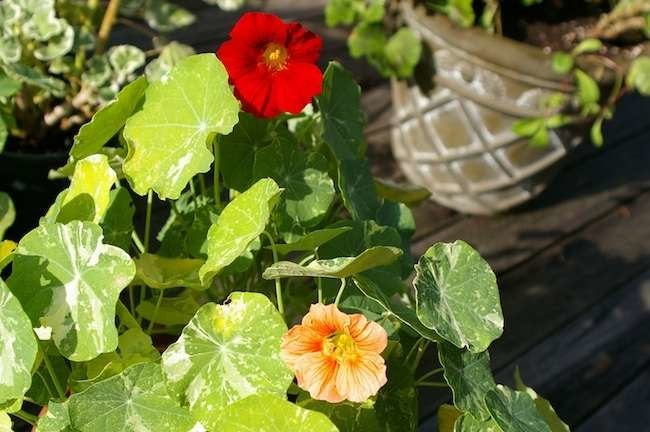

We may earn revenue from the products available on this page and participate in affiliate programs. Learn More ›
Home Advice You Can Trust
Tips, tricks & ideas for a better home and yard, delivered to your inbox daily.
Kitchen Garden in Pots

Planting a produce garden in your yard is not an option for every gardener or fresh vegetable lover. Some folks might not have the space, and others might live in a climate that isn’t hospitable to the fruits and vegetables they would like to grow.
If these aren’t good enough reasons to consider growing food in containers, here are a couple more: In some areas of the country, you can keep the plants alive year-round by overwintering them indoors. Finally, what’s more convenient than grabbing dinner ingredients off the deck rather than schlepping to the supermarket? Whatever your motivation for gardening in pots, read on to learn about a dozen of Mother Nature’s delights that can be successfully grown in containers.
Strawberries
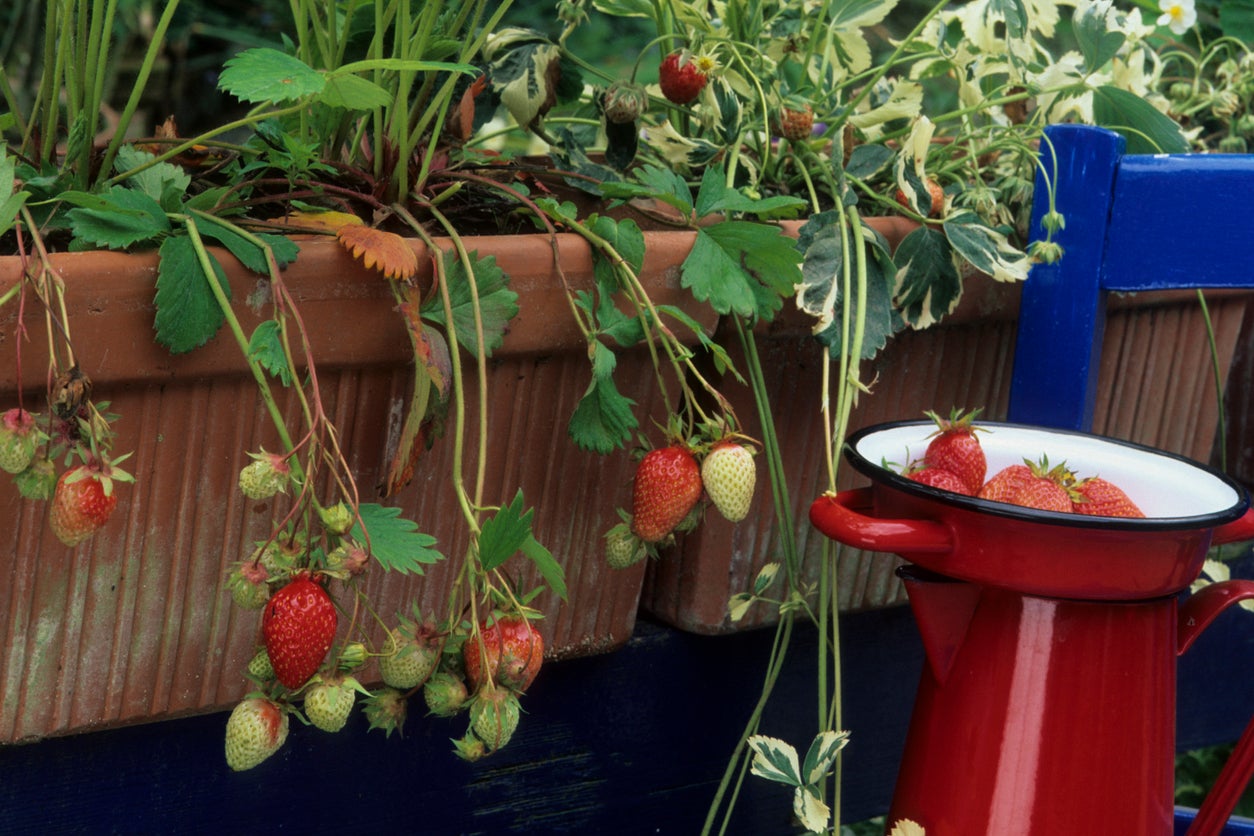
Strawberry plants are compact and adapt well to containers. That said, they need lots of warmth and sunshine—at least 6 to 8 hours a day—as well as well-draining soil. With shallow roots and a relatively small root ball, strawberry plants are perfect for pots designed with little cupped openings around the sides, typically referred to as “strawberry pots.”
Lemons
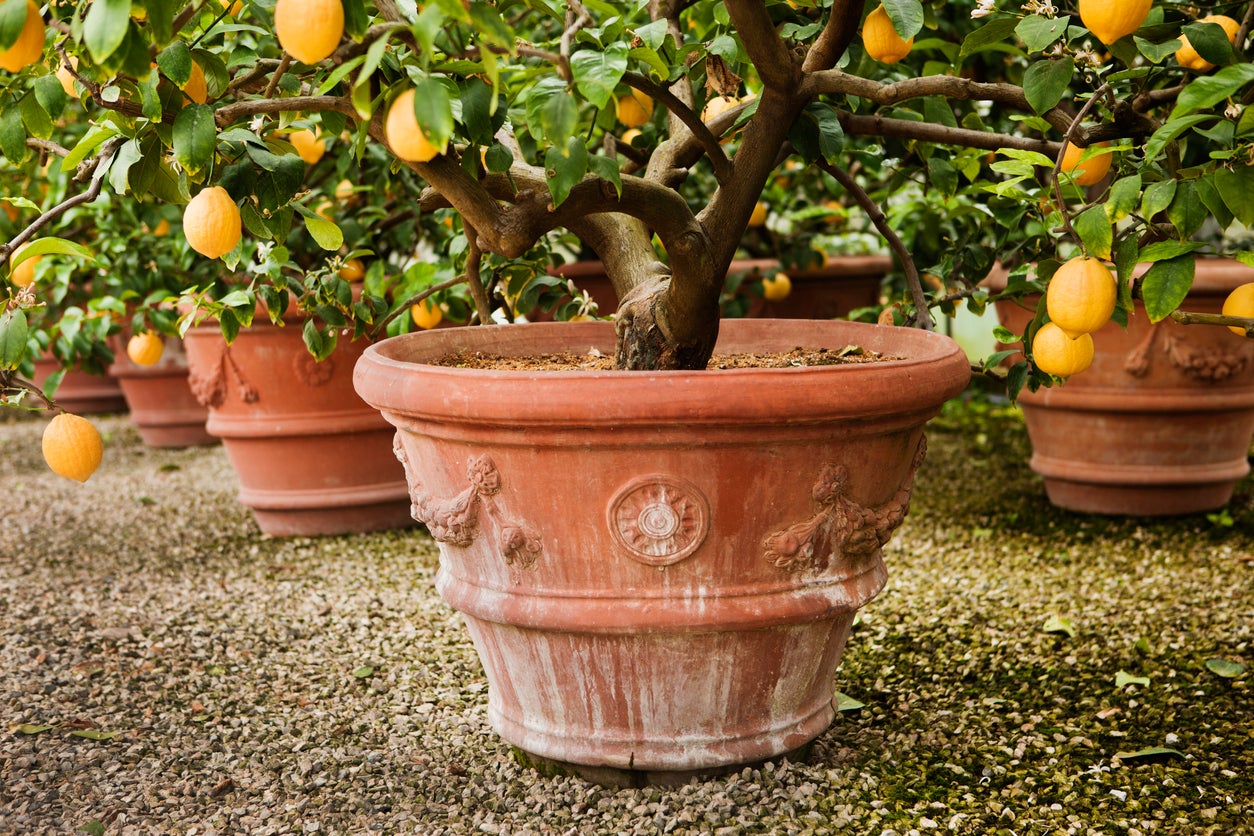
Unless you live in U.S. Department of Agriculture Zones 9 to 11, you should bring your lemon tree indoors in the winter and then set it back outside once temperatures stay reliably above 40 degrees. It’s fun to watch flowers turn into tiny green fruits that keep growing and eventually turn yellow. Your lemon tree will attract honey bees and hummingbirds, too.
Nasturtium
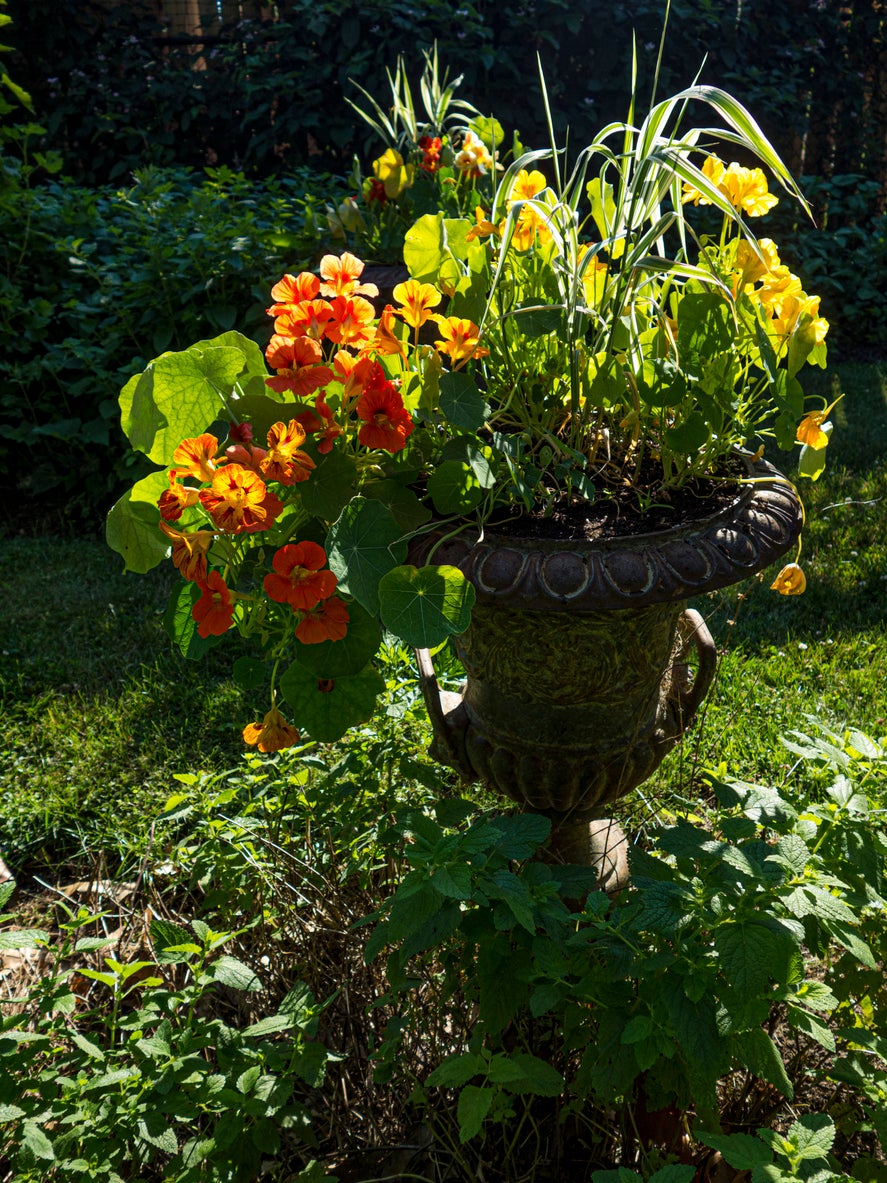
Nasturtium grows in either bushy or trailing forms. Both boast showy, edible flowers. Pluck a brightly colored flower or leaf for your salad, adding not only a dash of color but also a peppery flavor (similar to the taste of watercress). A prolific bloomer, nasturtium is a perennial in zones 9 through 11 and is grown as an annual in other parts of the country. This plant likes lots of sunshine and should receive regular watering.
Eggplant
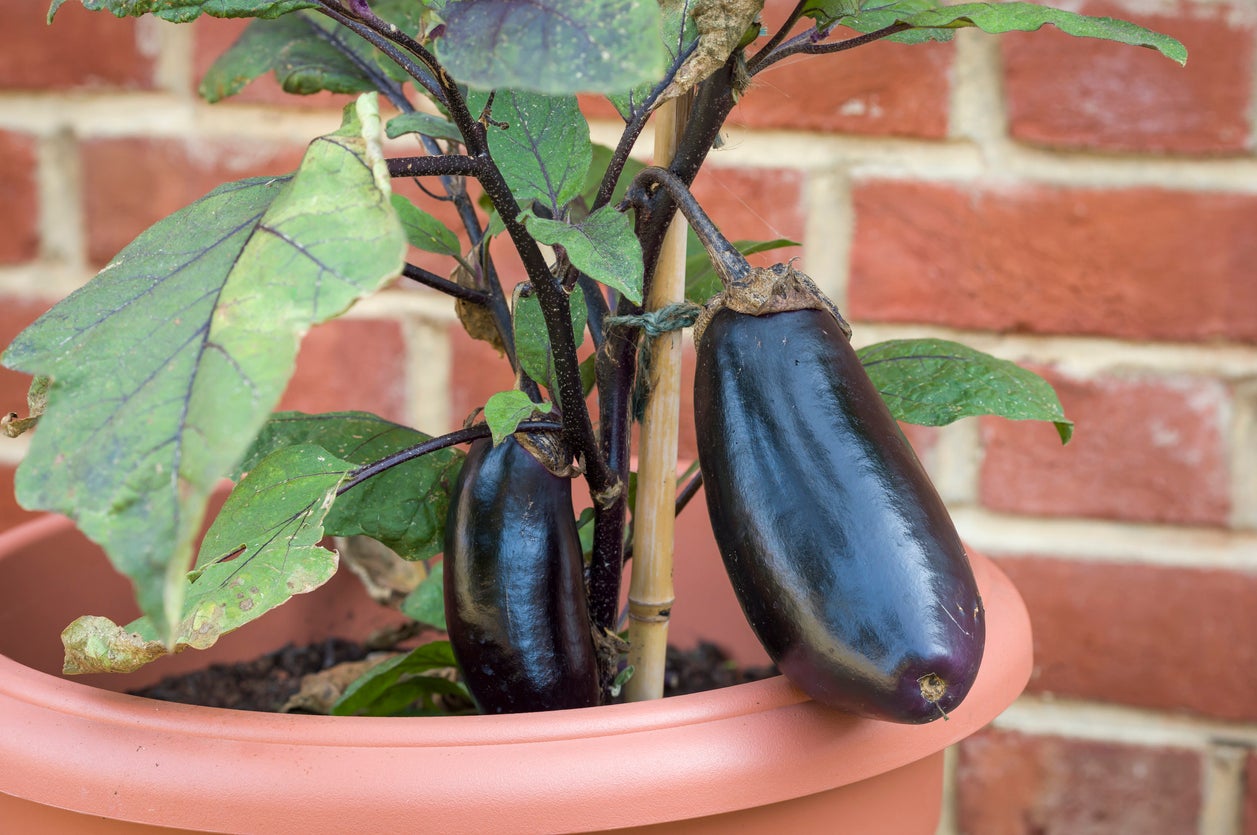
A sun-loving plant that’s perfect for containers, eggplant produces deep purple fruit that grows quickly and can be harvested starting in midsummer. As you await harvest time, enjoy the plant’s large, purple-veined leaves and bright purple flowers that offer color and texture to your back patio.
Figs
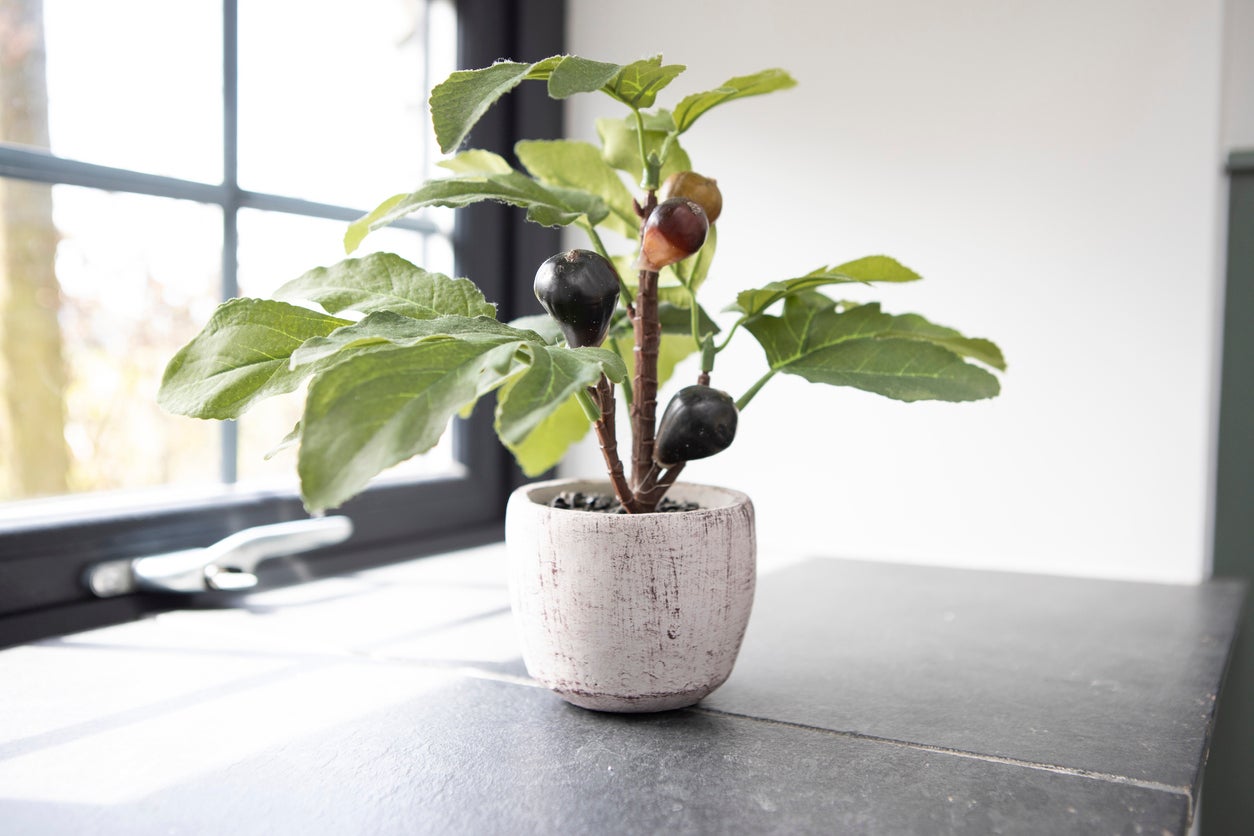
While there are a few cold-tolerant fig varieties, if you live in zone 7 or colder, odds are you’ll have trouble overwintering a fig tree in the ground. Northern gardeners might instead consider growing a fig tree in a container, so that it can be brought indoors when cold weather hits. Fig trees produce large showy leaves that offer interest to a patio or deck, and of course the fruit is scrumptious straight from the tree or baked into a tart.
Blueberries
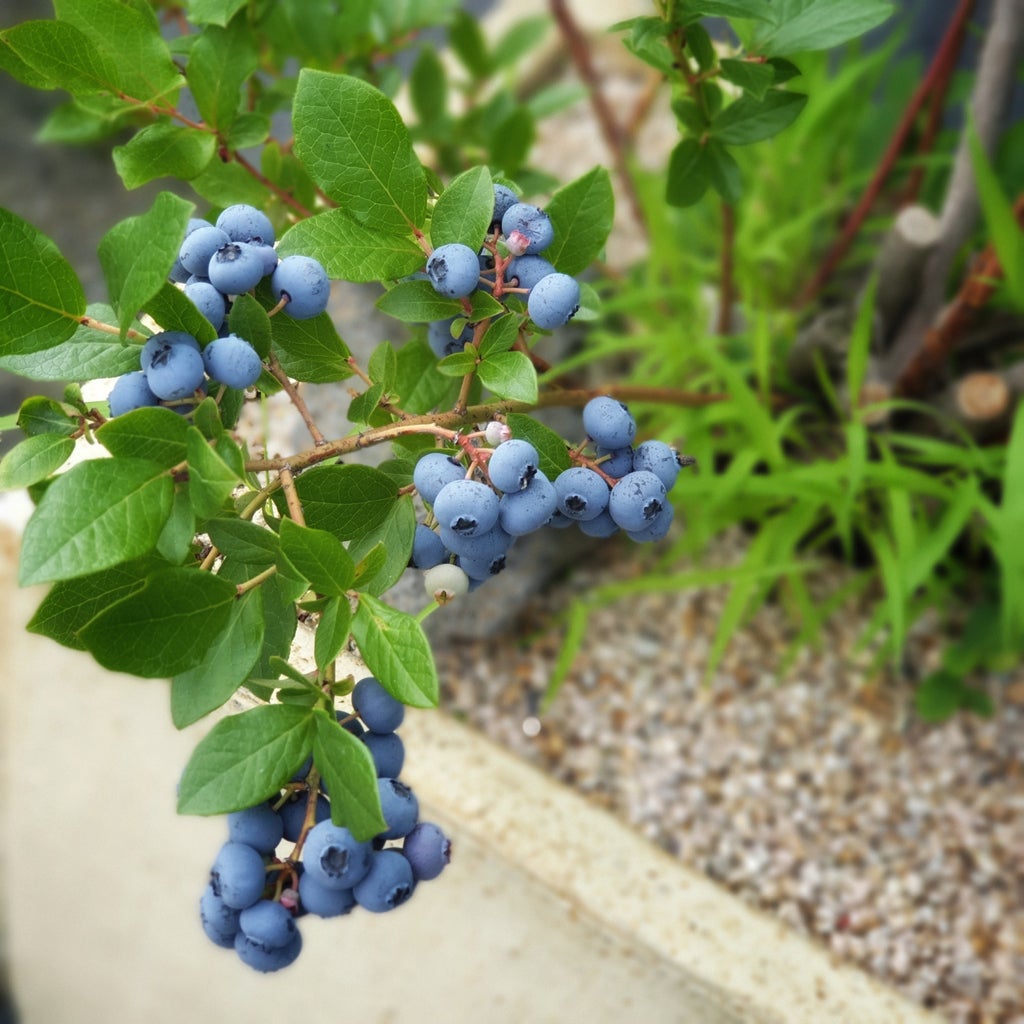
You can keep a blueberry bush in a large ceramic container outside on a patio or deck year-round; just remember to water it often, as these are not drought-tolerant plants. In winter, the blueberry goes dormant but as temperatures warm in early spring, the plant returns to life. And so long as the blueberry bush is kept fairly close to the house, you don’t have to cover it with netting to prevent birds from stealing the fruit (their favorite pastime). If you really love blueberries, consider potting up two plants in adjacent containers to encourage cross-pollination, which can result in a bigger crop.
Cherry Tomatoes
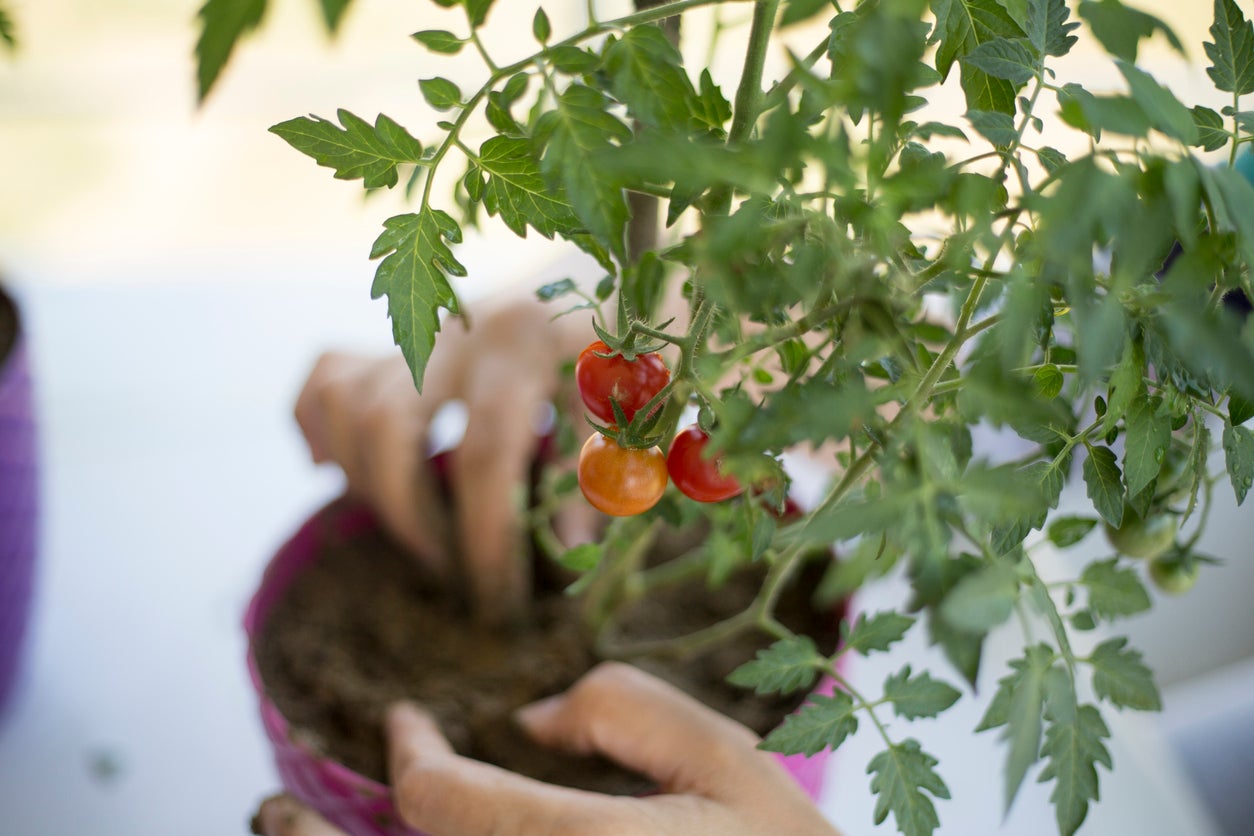
After starting a cherry or grape tomato plant from seed, pot it in a container on the deck or patio for a summer’s worth of enjoyment. A cherry tomato plant will require full sun and a trellis to support its fruit-bearing weight. In no time the plant will grow tall, flower, and ultimately become flavorful little globes tomatoes that you can pluck and toss into your dinner salad.
Kale
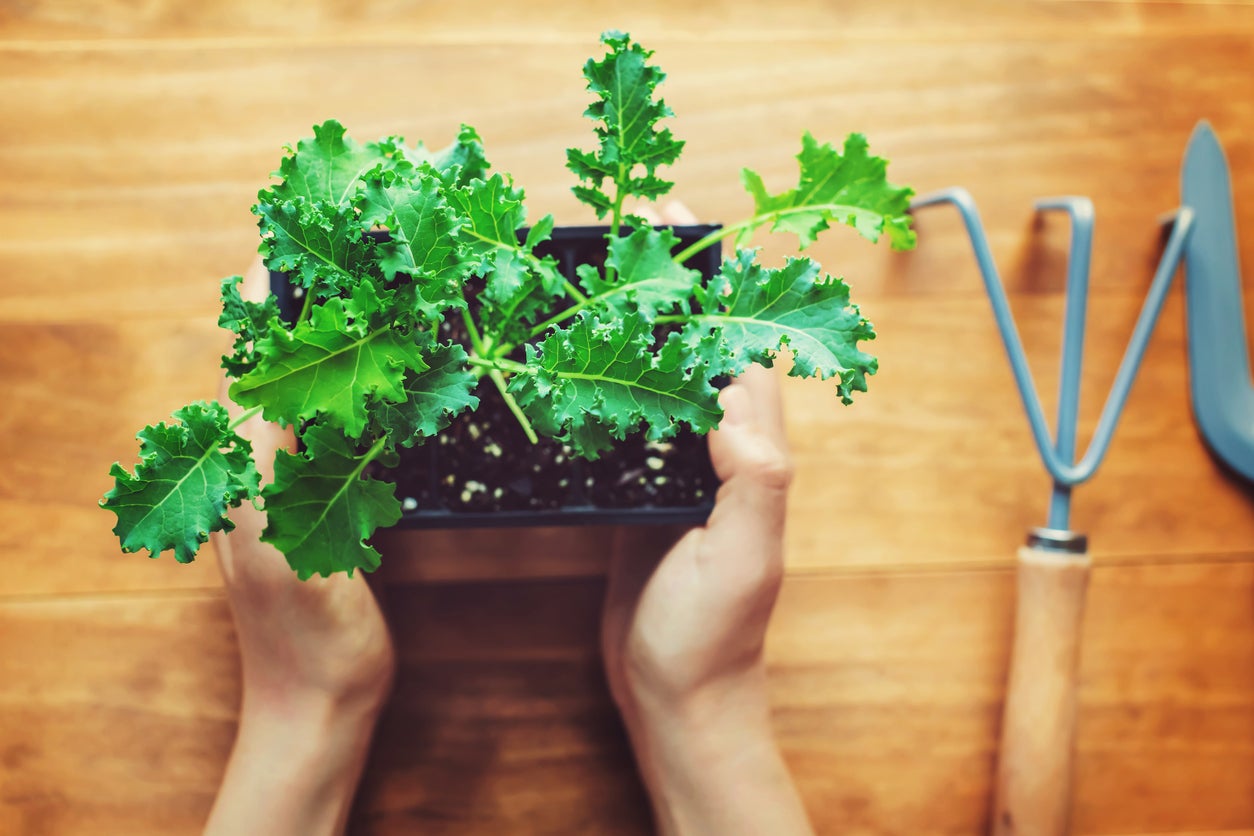
Unlike many of the plants on this list, kale is a cool-weather crop, and you’ll want to consult regional advice as to the best time of year to have pots full of this leafy vegetable on the back deck. Start kale from seed, and for added color and flavors, mix kale with other leafy edible plants like Swiss chard.
It’s worth mentioning that kale is considered one of the healthiest vegetables available, rich in sulfur-containing phytonutrients and antioxidant vitamins A, C, and K.
Lettuces
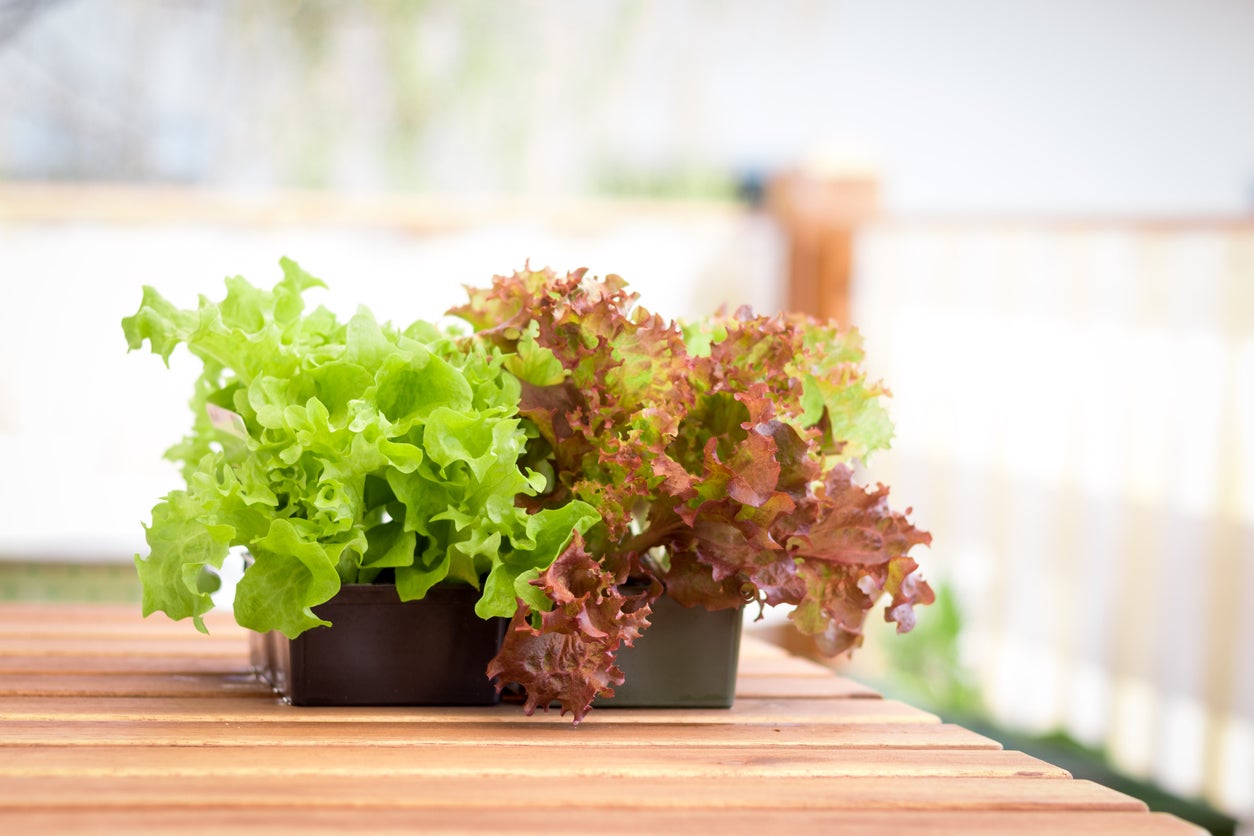
You can start lettuce from seed in your favorite pot. Alternatively, buy small plugs at the garden center and transplant them, mixing varieties to create a salad mix that is healthful, tasty, and attractive. As with kale, check local sources for timing. For example, lettuce is a winter crop in much of zones 7, 8, and 9, but grows in spring and even summer in northern zones.
As the loose-leaf lettuce plants mature, pinch off leaves for sandwiches and salads. They produce more leaves quickly, so you’ll have a continuous supply of crisp, fresh greens.
Chives
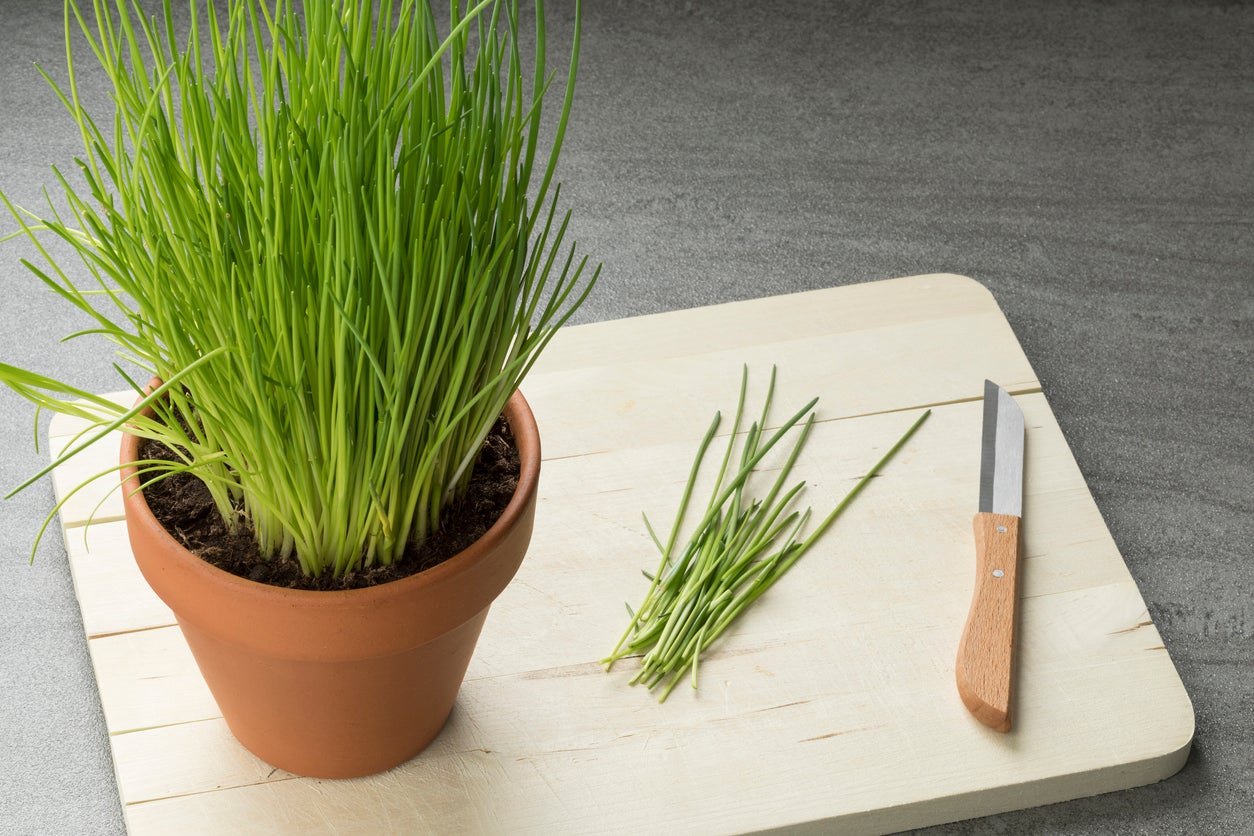
A perennial with architectural appeal, chives are quite cold tolerant—hardy to zone 2—so they can offer year-round cuttings. If you bring your chive plant inside to overwinter, keep the plant on a sunny windowsill or under a grow light. And be sure to take the container outside for at least one frost; it needs this chilly signal to tell it to burst back into growth mode come springtime.
Ginger
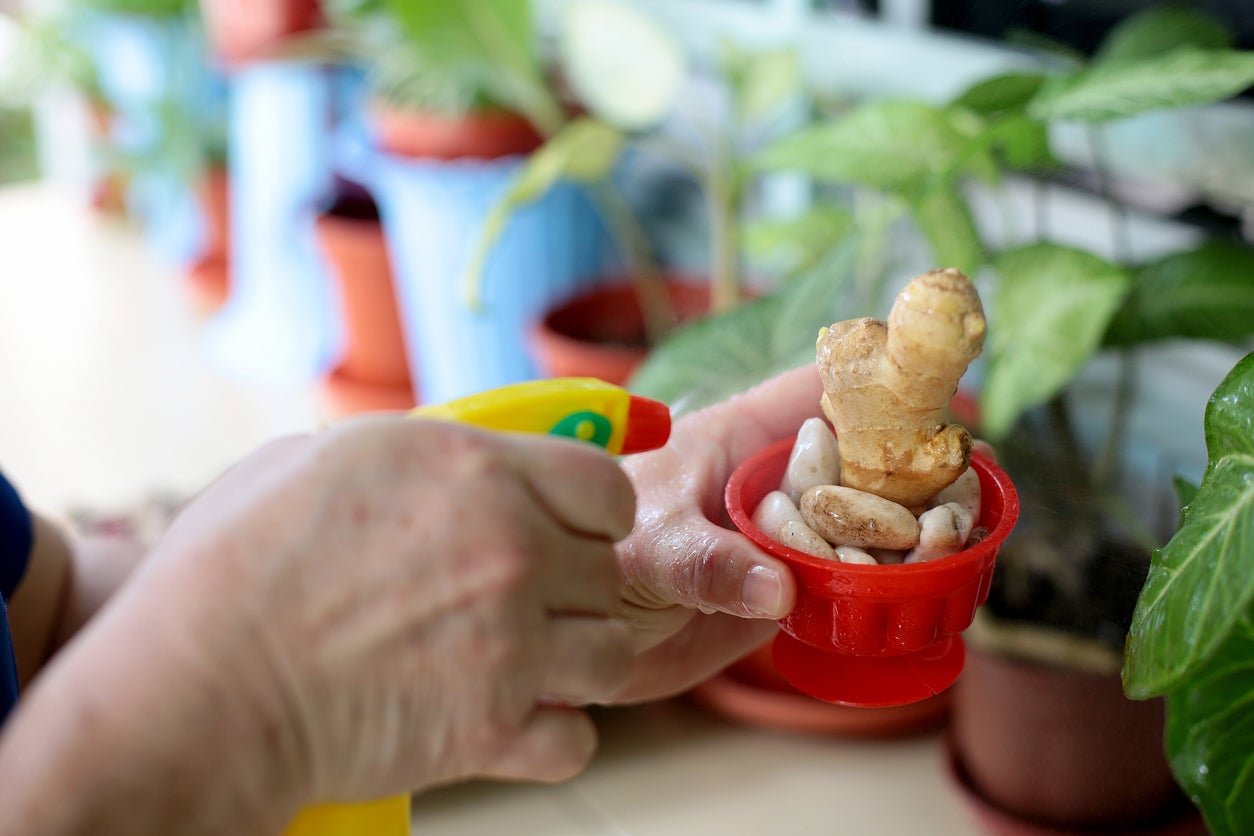
Cooks who rely often on ginger’s flavorful pungency might appreciate having an ever-ready supply. Keep this tropical plant in a place that gets morning sun but has some shade in the afternoon, and keep the soil moist but not soggy. Bring your pot o’ ginger indoors when temps drop below 50 degrees Fahrenheit. Ginger is ready to harvest when the leaves begin turning yellow, but be sure to leave some of the rhizome (root) to grow more!
Turmeric
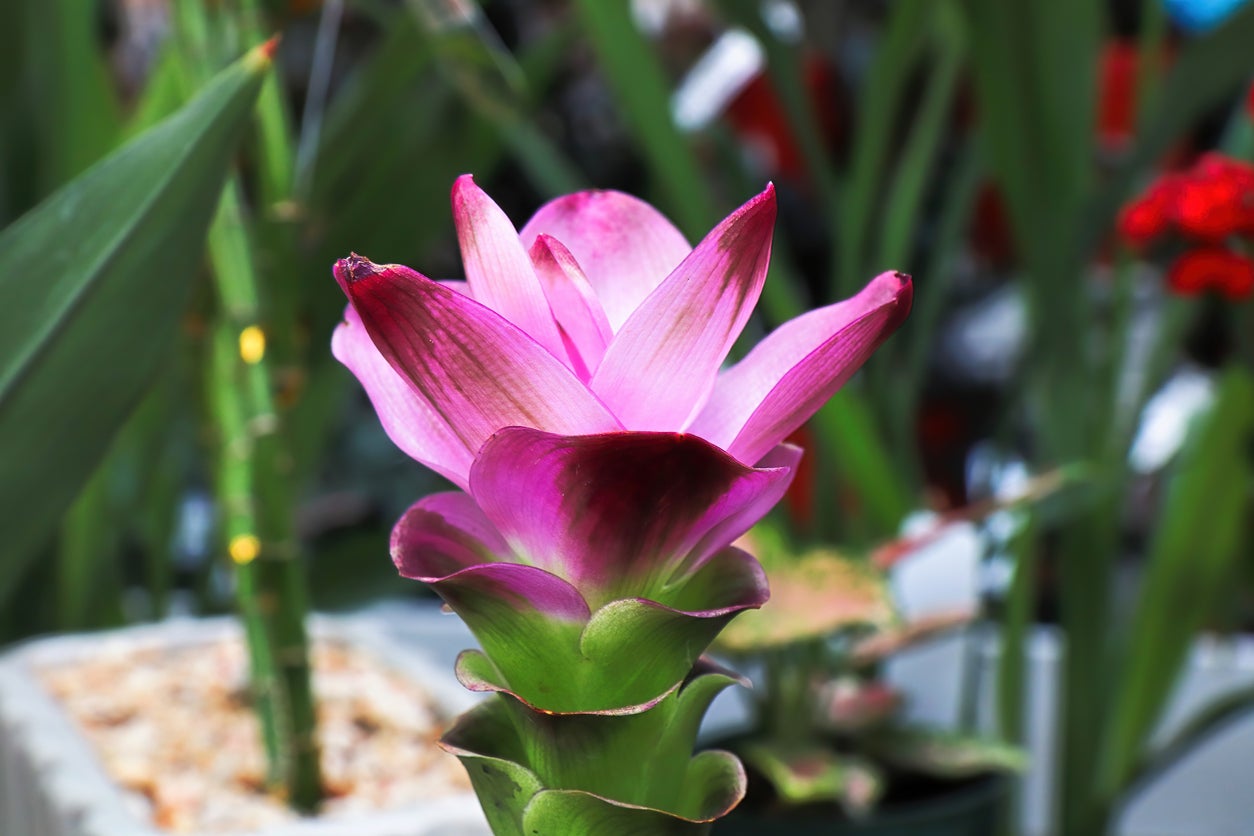
If your culinary creations also include turmeric, consider adding this vividly orange spice—a cousin of ginger—to your collection of container plants. Turmeric gardeners are rewarded with lush, 3-foot tall and wide plants (so use a big pot!) that produce attractive red flowers that are reason enough to grow this showy beauty.
The main reward comes in the plant’s tasty and medicinal rhizomes, which develop over the course of about 10 months. Gardeners in zones 7 and colder can put their containers in spots that receive all-day sun, while southern growers will need to provide some shade. Bring turmeric plants indoors when temperatures drop into the 50s.

All You Need to Care for Your Lawn & Garden
Keeping your grass green and your plants thriving doesn’t just take a green thumb—it starts with the right tools and supplies.